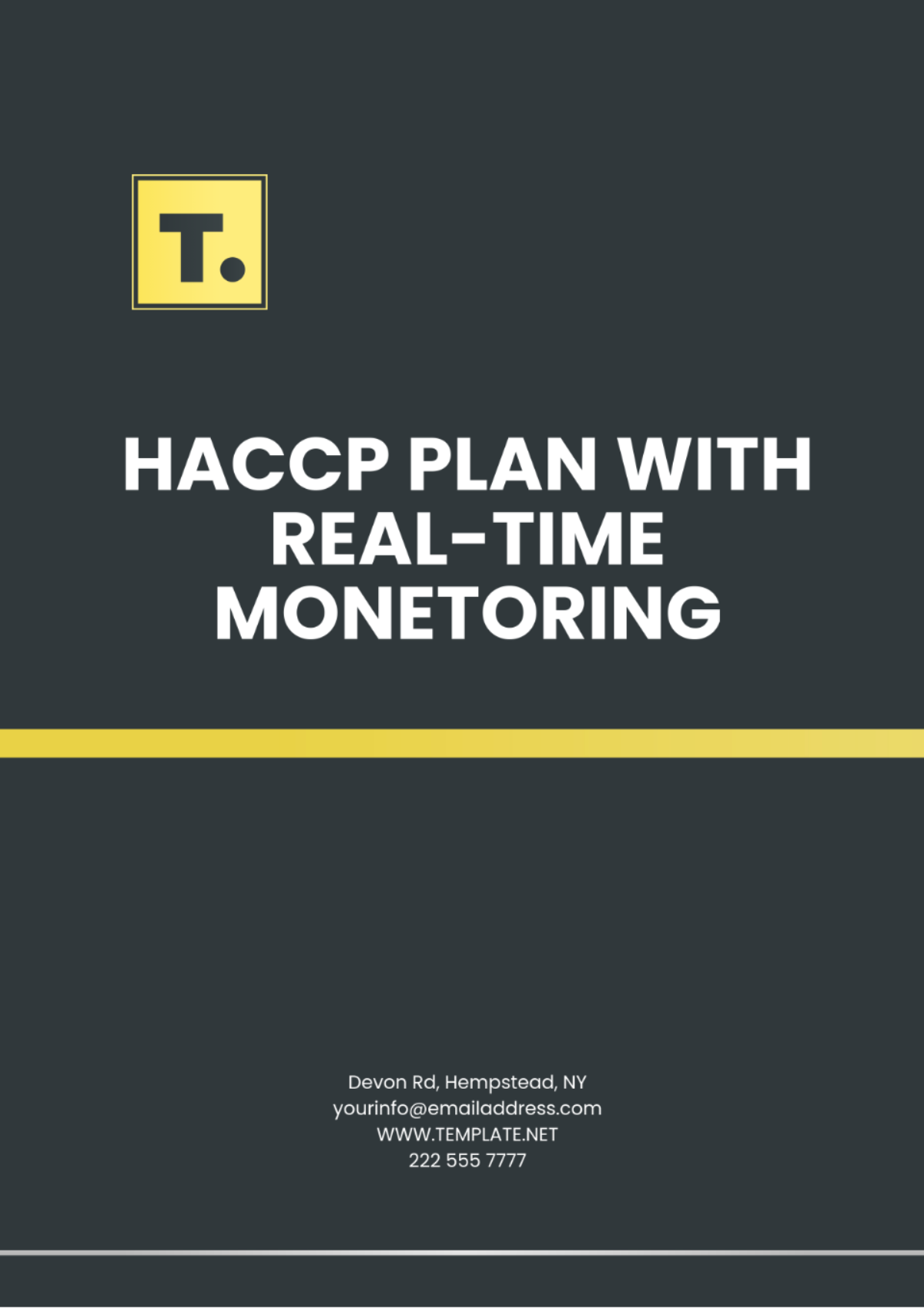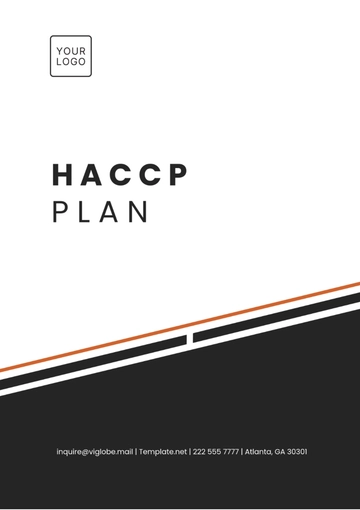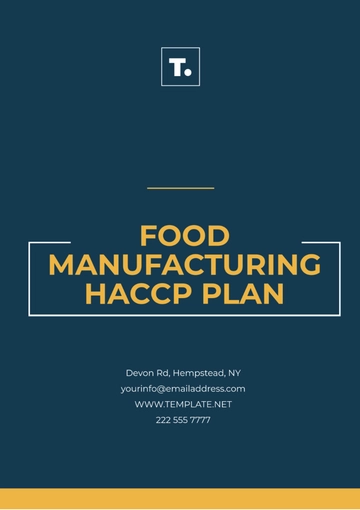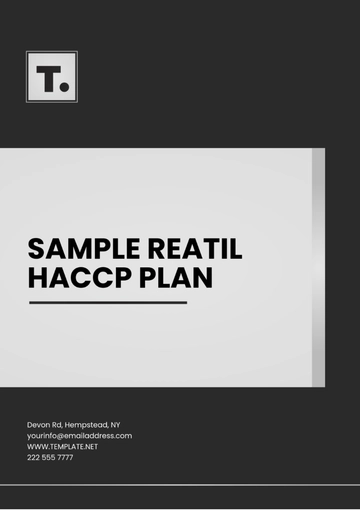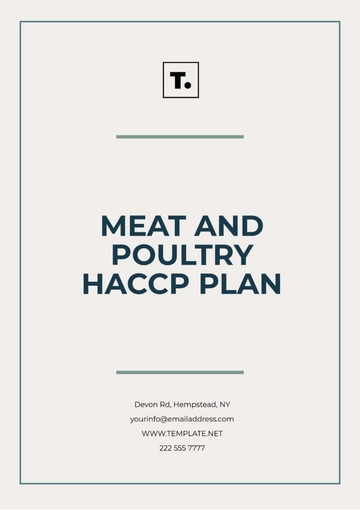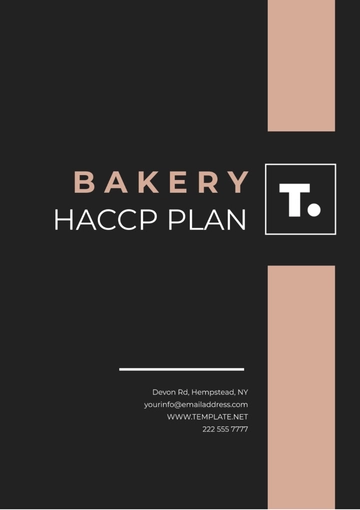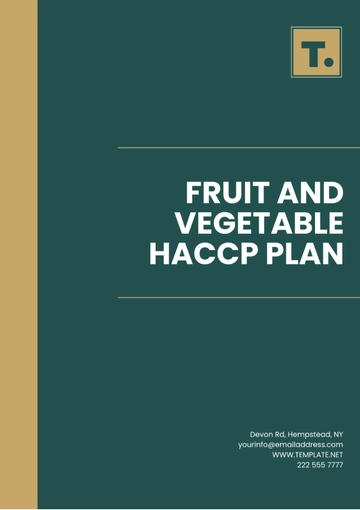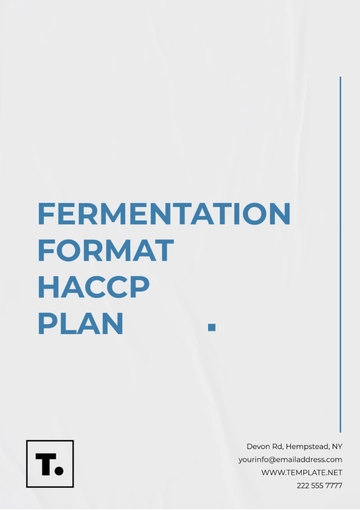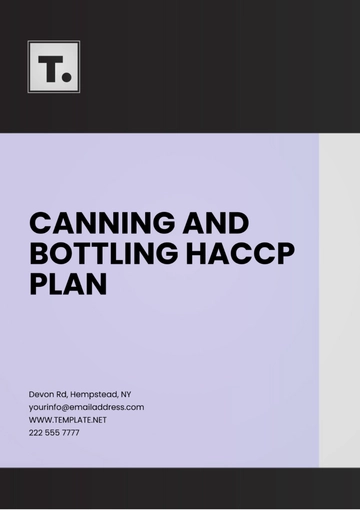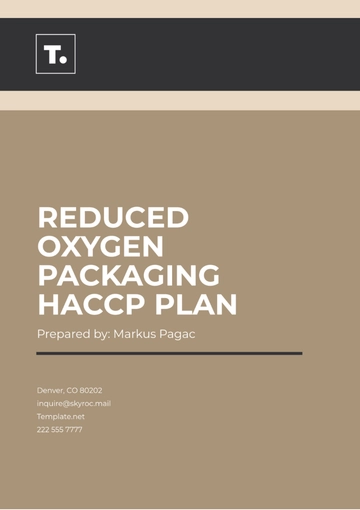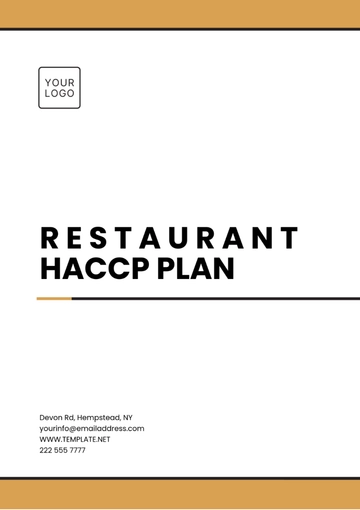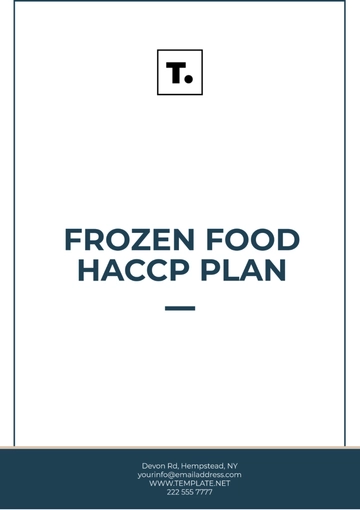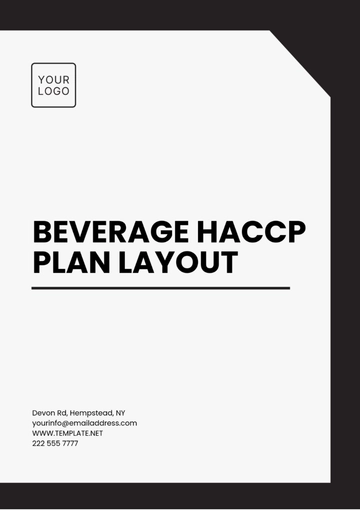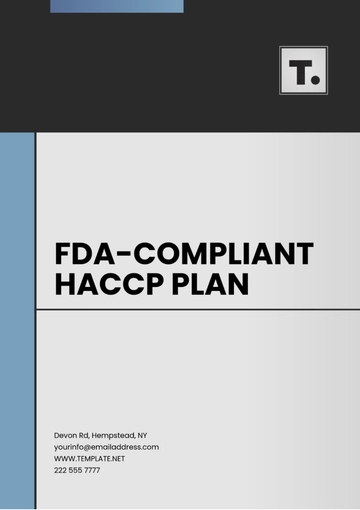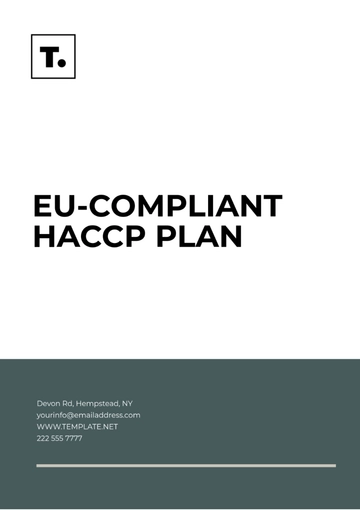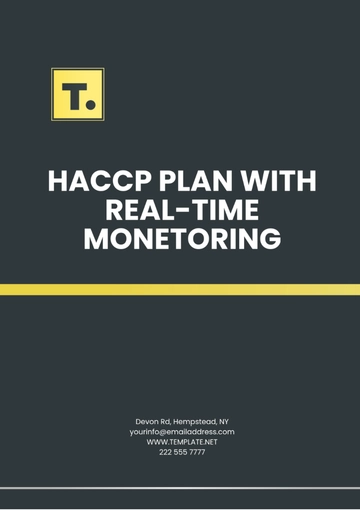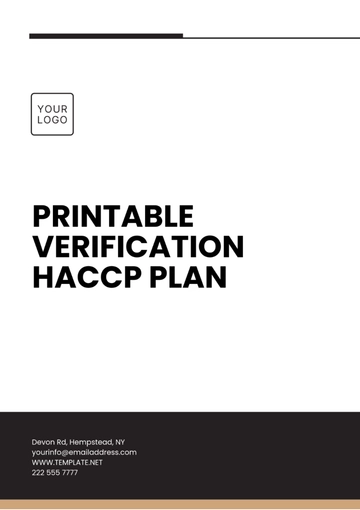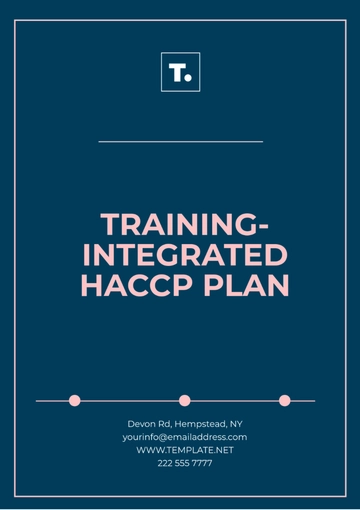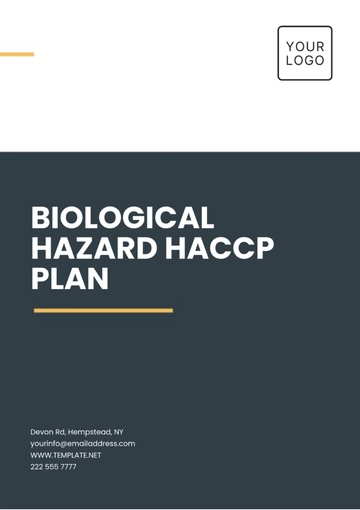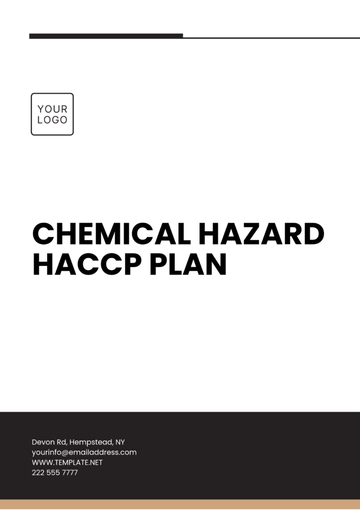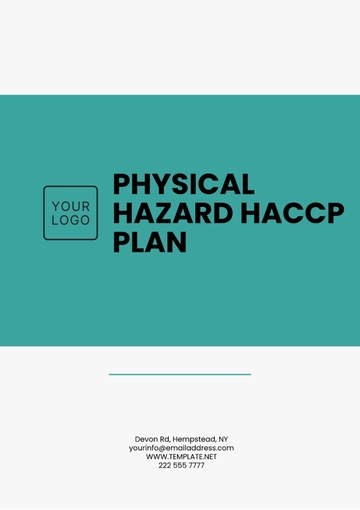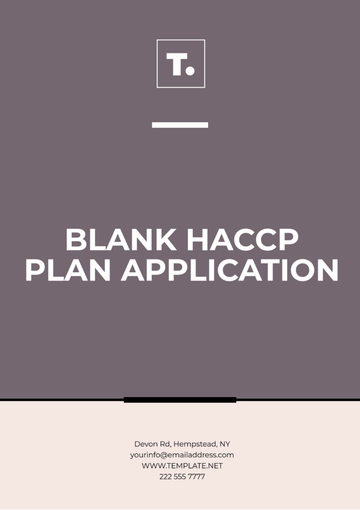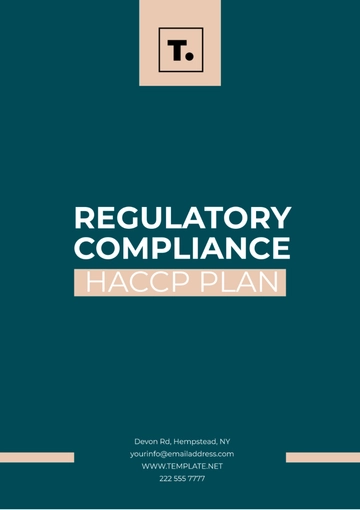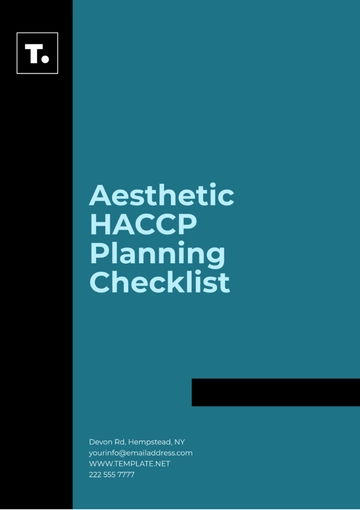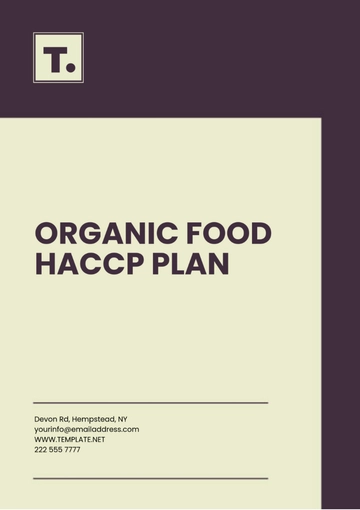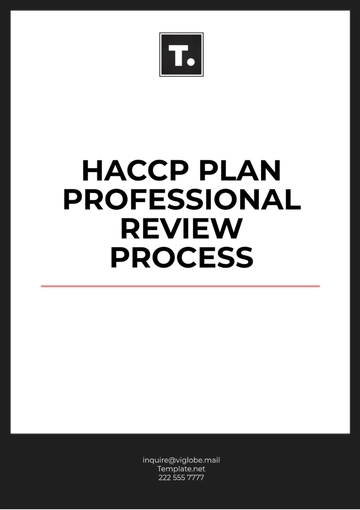HACCP Plan with Real-Time Monitoring
Date: January 10, 2060
Prepared by: [YOUR NAME]
I. Introduction
The Hazard Analysis Critical Control Point (HACCP) system is a preventive approach to food safety. By integrating real-time monitoring, this plan aims to enhance the accuracy and timeliness of hazard interventions at critical control points (CCPs), ensuring food safety and compliance with regulatory standards.
1.1 Objective
The primary objective of this plan is to identify and control potential risks in food production processes using advanced monitoring systems to detect and correct hazards instantaneously.
II. Hazard Analysis
2.1 Identifying Hazards
Biological Hazards: Bacteria, viruses, and parasites
Chemical Hazards: Pesticides, food additives, and contaminants
Physical Hazards: Metal shards, glass particles
III. Critical Control Points (CCPs)
3.1 Determining CCPs
Utilize a decision tree methodology to systematically identify various steps within the overall process where it is possible to apply specific control measures. These measures are intended to either prevent the occurrence of potential hazards or effectively eliminate any identified hazards to ensure the safety and integrity of the entire process.
IV. Real-Time Monitoring Tools and Techniques
4.1 Tools and Equipment
Sensors and digital thermometers
Automated data logging systems
Notification/alert systems
4.2 Monitoring Procedures
Create and implement detailed routines for monitoring at each critical control point (CCP), making sure that the monitoring results are consistently verified for accuracy and systematically recorded in an electronic format.
V. Corrective Actions
5.1 Corrective Action Procedures
Identify the deviation and isolate affected products.
Investigate root causes to prevent recurrence.
Document actions taken and management report.
VI. Verification Procedures
6.1 Verification Activities
VII. Record Keeping and Documentation
7.1 Documentation Practices
Maintaining up-to-date records of monitoring and corrective actions
Documenting verification and validation activities
Keeping records accessible for audits and inspections
VIII. Conclusion
The implementation of a HACCP plan with real-time monitoring is imperative for effective food safety management. By continuously monitoring CCPs and taking immediate action in case of deviations, food producers can ensure the safety of their products.
Plan Templates @ Template.net
